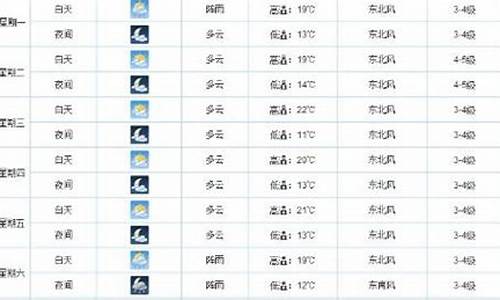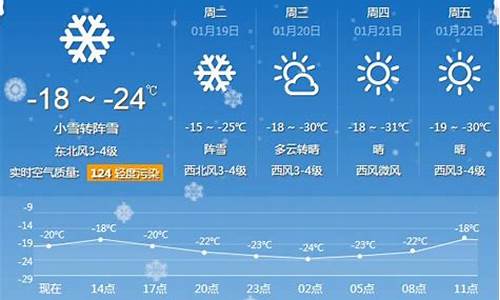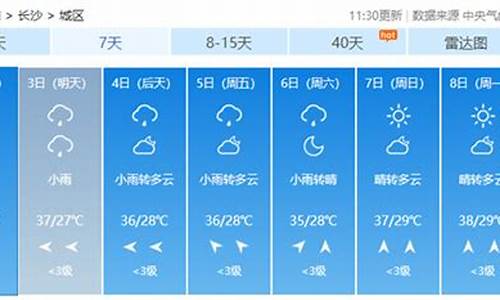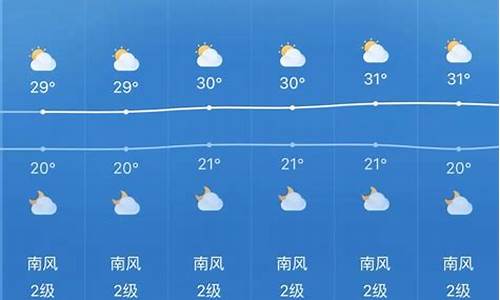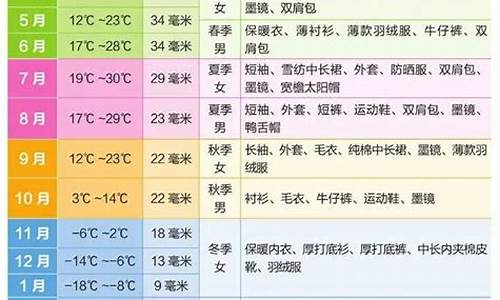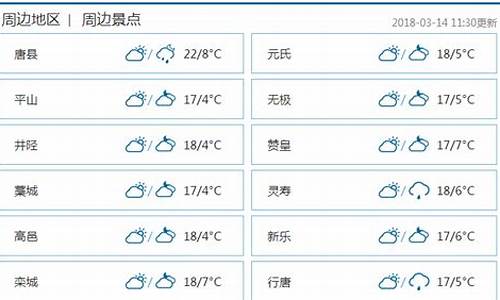地中海式气候英文_地中海气候翻译
1.近东,中东,远东分别包括哪些国家?
2.非洲的好望角为什么是地中海气候
3.中东和远东地区指的是哪些地方
4.美国的一些地理知识(中英文)
5.200分求一篇有关经济移民类的英文论文,字数1000字以上
6.名词解释: 1.京九铁路; 2.南斯拉夫; 3.地理现; 4.地中海气候。
7.戛纳的英文是什么

意大利的英语:Italy。
意大利共和国主要由南欧的亚平宁半岛及两个位于地中海中的岛屿西西里岛与萨丁岛所组成。国土面积为301333平方公里,人口6080万。北方的阿尔卑斯山地区与法国、瑞士、奥地利以及斯洛文尼亚接壤,其领土还包围着两个微型国家——圣马力诺与梵蒂冈。
意大利首都罗马,几个世纪一直都是西方文明的中心。古罗马先后经历罗马王政时代(前753~前509年)、罗马共和国(前509~前27年)、罗马帝国(前27~476年)三个阶段,存在时间长达一千年。罗马共和时代基本完成疆域扩张,帝国时期成为以地中海为中心,跨越欧、亚、非三大洲的大帝国。
476年西罗马帝国灭亡,14世纪的意大利成为欧洲文艺复兴的发源地。15世纪末,法国和西班牙争夺亚平宁半岛斗争激化,导致了持续数十年的意大利战争。
18世纪民族主义开始觉醒。19世纪意大利复兴运动兴起,撒丁王国开始逐步统一南北,1861年建立意大利王国,1870年攻克教皇国首都罗马,完成意大利统一 。二战战败后废除君主制,成立共和国。
扩展资料
意大利北部有阿尔卑斯山脉(Alpi),中部有亚平宁山脉。北部有波河平原,土壤肥沃农业发达。
意、法边境的勃朗峰海拔4810米,是欧洲第二高峰;多火山和地震,亚平宁半岛西侧有著名的维苏威火山,西西里岛上的埃特纳火山是欧洲最大的活火山。
意大利最大河流是波河,发源于阿尔卑斯山南坡,水能蕴藏丰富。台伯河是流经罗马的主要河流。
较大湖泊有加尔达湖、特拉西梅诺湖、马焦雷湖、科摩湖等。
意大利大部分地区属亚热带地中海型气候。根据意大利各地不同的地形和地理位置,全国分为以下三个气候区:南部半岛和岛屿区、马丹平原区和阿尔卑斯山区。这三个区的气候各有不同的特点。
近东,中东,远东分别包括哪些国家?
旧金山英文说法:San Francisco。
扩展资料:
旧金山(San Francisco),旧称“三藩市”、“圣弗朗西斯科”,美国加利福尼亚州太平洋沿岸的港口城市,是世界著名旅游胜地、加州人口第四大城市。旧金山临近世界著名技术产业区硅谷,是世界重要的技术研发基地之一和美国西海岸重要的金融中心。
旧金山属地中海气候,其与旧金山湾边各都市组成的旧金山湾区,著名景点有金门大桥和渔人码头,气候冬暖夏凉、阳光充足,临近众多美国国家公园(如约塞米蒂国家公园)和加州葡萄酒产地纳帕谷,常被誉为“最受美国人欢迎的城市”。
1769年西班牙人发现此地,1848年加入美联邦,19世纪中叶在淘金热中迅速发展,华侨称为“金山”,后为区别于澳大利亚墨尔本(新金山)而改称“旧金山”。
截止2018年7月,旧金山全市人口约88万,其中华裔18万,是西半球华人密度最高的地区之一,华人总数量仅次于纽约。
旧金山位于加州主要地震区。历史上最大的地震是在1906年,之前在1851年、1858、1865年和1868年发生过大型地震。
最近的地震是1989年,市中心的街道出了几尺宽的裂口,其中包括上海湾大桥的路线。市区是典型的丘陵地带,城内有很多直上直下的街道。市内有三个最有名的山坡:Nob Hill,Russian Hill和Telegraph Hill。
旧金山半岛三面环水,并受太平洋加利福尼亚寒流影响,旧金山是典型的凉夏型地中海式气候。因长期受海风影响,旧金山夏天的日高温通常只有20摄氏度(℃)左右,一年大约只有一个星期会因强劲陆风影响而超过30℃。
非洲的好望角为什么是地中海气候
1、近东
“近东”主要指南斯拉夫、阿尔巴尼亚、希腊、保加利亚和罗马尼亚、亚洲的地中海沿岸国家和地区(土耳其、叙利亚、黎巴嫩、巴勒斯坦、以色列、约旦等和东地中海岛国塞浦路斯,还包括北非的埃及和利比亚。它们距离西欧较近,同西欧联系密切。
2、中东
中东是指地中海东部与南部区域,从地中海东部到波斯湾的大片地区。在地理上,中东的范围包括西亚地区(除阿富汗),并包含部分北非地区,也是非洲与欧亚大陆的亚区。
包括沙特、伊朗、科威特、伊拉克、阿联酋、阿曼、卡塔尔、巴林、土耳其、以色列、巴勒斯坦、叙利亚、黎巴嫩、约旦、也门和塞浦路斯、苏丹、埃及、利比亚、突尼斯、阿尔及利亚、摩洛哥、马德拉群岛、亚速尔群岛。
3、远东
“远东”这一名称,与东亚相关。在不列颠帝国时期这个词作为不列颠印度以东的统称而流行于英语中。是指环西太平洋和东印度洋国家和地区,包括中国、日本、朝鲜、越南、菲律宾、马来西亚和印度尼西亚等国。
扩展资料:
近东,中东,远东,都是西方国家(主要是西欧各国)以他们所在地区通向亚洲的海上路径——西地中海一带为基点,对东方广大地区的称呼。
这几个系列性词语、大约出现于欧洲各殖民一帝国主义国家向外、特别是向东方扩张的早期,而开始盛行于19世纪,相沿使用以迄于今。
原来笼统地称为“东方”,因地区过于辽阔,始进一步按照和它们距离的遐迩,分别称为近东、中东和远东。
至于就欧洲人称呼的“东方”乃至亚洲本身而论,所谓“远”、“近”和所谓“东”也者,应该正好颠倒过来才对,我国历史上的说的“西域”,按广义曾把后世的“中东”以及迤西的地区都包括在内,就是一个证明。
说穿了,“近东”、“中东”和“远东”云云,不过是“欧洲中心论”的一种反映,徒因相当长时期以来,“西方”在世界上得势,这些经不起推敲的地区名,方通行无阻而己。
就“创造”这些地区名的西欧而言,顾名思义,近东距离近些,远东距离远些(乃至最远),中东是不近不远。但不论近、中、远,都是些相对字眼,本来就模模糊糊,仅有大致范围,没有明确界限。
各自的范围还随时代、随称说者的立脚点、随使用者的意图和目的等等,进退、盈缩不定。比如“近东”,最初指地中海东部地区,由于这个地区曾长期处于奥斯曼帝国统治下,与西欧不是一个世界。
在那个时期,有人就拿它当奥斯曼帝国的同义词使用,“近东者,奥斯曼帝国之谓也”。
有的英国人把巴尔干半岛视为近东的“实指”部分,也就是奥斯曼帝国核心部分,东南方的毗连地区,则是它的外延。按这种说法,东南欧印亚非两洲的东地中海沿岸,都涵盖在内。
百度百科——近东
百度百科——中东
百度百科——远东
中东和远东地区指的是哪些地方
这是地带性地中海气候
地中海气候分布于南北纬30-40度的大陆西岸
亚热带地中海气候区由西风带和副热带高压带及信风带交替控制。冬季时,西风带南移至此气候区内,西风从海洋上带来潮湿的气流,加上锋面气旋活动频繁,因此气候温和多雨。而夏季时,副热带高压或信风向北移至此气候区内,气流以下沉为主,再加上沿海寒流的作用,不易形成降水,因此气候干燥炎热。
美国的一些地理知识(中英文)
1、“中东地区”或“中东” 是指地中海东部与南部区域,从地中海东部到波斯湾的大片地区,“中东”地理上也是亚洲西部与非洲东北部的地区。 它包括西亚和非洲埃及。“中东”不属于正式的地理术语。中东地区的气候类型主要为热带沙漠气候、地中海气候、温带大陆性气候。 其中热带沙漠气候分布最广。联系亚、欧、非三大洲,沟通大西洋和印度洋,自古以来是东西方交通枢纽,位于“三洲五海”之地,战略位置极其重要,为争夺宝贵的淡水和石油,常年战争不断。
外文名称 Middle East
地理位置 亚洲西部与非洲东北部
方 言 阿拉伯语,波斯语,土耳其语
气候条件 热带沙漠气候、地中海气候、温带大陆性气候
包含国家 伊朗、沙特、也门、伊拉克等
宗教信仰 伊斯兰教、犹太教和基督教等
“中东”概念究竟包括哪些国家和地区,国内外尚无定论,但一般泛指西亚地区,约17个国家。传统上的“中东”一般说来包括巴林、埃及、伊朗、伊拉克、以色列、约旦、科威特、黎巴嫩、阿曼、卡塔尔、沙特阿拉伯、叙利亚、阿拉伯联合酋长国、也门、巴勒斯坦、塞浦路斯和土耳其。其中,除以色列和塞浦路斯外,都是家。而在这些中东家中,土耳其、伊朗为非阿拉伯国家。
2、远东(英文:Far East)是欧美人使用的地理概念,他们以欧洲为中心,把东南欧、非洲东北称为“近东”,西亚附近称为“中东”,把更远的东方称为“远东”。远东一般包括今天的东亚(包括俄罗斯的东部)、东南亚和南亚,即阿富汗、哈萨克以东、澳洲以北、太平洋以西、北冰洋以南的地区。远东,是西方国家开始向东方扩张时对亚洲最东部地区的通称,通常包括中国东部、朝鲜、韩国、日本、菲律宾和俄罗斯太平洋沿岸地区。
200分求一篇有关经济移民类的英文论文,字数1000字以上
美国本土位于北美洲中部,领土还包括北美洲西北部的阿拉斯加和太平洋中部的夏威夷群岛等。全国国土面积9,629,091平方公里(中华人民共和国国家统计局、美国国家总审计局),次于俄罗斯与加拿大。其北与加拿大接壤,南靠墨西哥湾,西临太平洋,东濒大西洋。海岸线22,680公里。大部分地区属于温带大陆性气候,南部属亚热带气候,东部沿海地区分布有温带海洋性气候和地中海气候。中北部平原(中央大平原)温差很大,芝加哥1月平均气温-3℃,7月24℃;墨西哥湾沿岸1月平均气温11℃,7月28℃。全国最低点为死亡谷(Death Valley,-86 米),最高点为麦金利山(Mount Mckinley,6,198 米)。
The United States is located in North America, Central, territory includes North America, Alaska and the northwest Hawaiian Islands, the central Pacific. National land area of 9,629,091 square kilometers (National Bureau of Statistics, the National General Accounting Office), behind Russia and Canada. Its northern border with Canada, south through the Gulf of Mexico, the west Pacific Ocean, east Atlantic Ocean. Coastline of 22,680 kilometers. Most regions of the temperate continental climate, the southern suropical climate, distributed in the eastern coastal temperate maritime climate and Mediterranean climate. North Central Plain (central Great Plains) a great difference in temperature in Chicago in January erage temperature of -3 ℃, 7 Yue 24 ℃; the Gulf Coast in January erage temperature of 11 ℃, 7 Yue 28 ℃. The lowest point of Death Valley National (Death Valley, -86 m), highest point Mount McKinley (Mount Mckinley, 6,198 m).
名词解释: 1.京九铁路; 2.南斯拉夫; 3.地理现; 4.地中海气候。
INTRODUCTION
The 19-member Global Commission on International Migration (GCIM) released
a six-chapter consensus report on 5 October 2005 calling on all nations to
respect the human rights of migrants and recommending a new Interagency
Global Migration Facility to help coordinate migration policies at the regional
and eventually global level. The GCIM mandate was to put migration on the
global agenda, to highlight gaps in policy responses to people crossing national
borders, and to examine links between migration and other global issues.
The report includes six principles and 33 more specific recommendations aimed
at creating a comprehensive global framework in six broad areas: migrants in a
globalizing labour market, migration and development, irregular migration, migrants
in society, the human rights of migrants, and the governance of migration.
Of the 33 recommendations, 25 are directed primarily at developed or receiving
countries, 15 to sending countries, and eight to the international community.
Many of these recommendations he been made previously, and some are
included in earlier United Nations’ system reports and declarations.
MIGRANT WORKERS AND DEVELOPMENT
Chapter one begins with the estimate that 200 million people are outside their
countries of birth or citizenship (the UN is revising this figure to 190 million in
2005), that half are in the labour forces of receiving countries, and that development
and demographic disparities, as well as deficits in the protection of human
rights, promise more migration. Perhaps the most important GCIM recommendation
is the call to open more doors for guest workers in order to reduce illegal
migration.
GCIM praises traditional immigration countries such as Australia, Canada, and
the United States, but calls for more temporary worker programmes because
they are more acceptable in “non-immigrant Europe” as well as in many developing
countries attracting migrants from their poorer neighbours. GCIM asserts that
some sending countries believe that the circular migration promised by guest
worker programmes is more beneficial to them, and concludes that “the old
paradigm of permanent migrant settlement is giving way to temporary and circular
migration” (GCIM: 31).
GCIM acknowledges the problems of temporary worker programmes, including
the fact that migrant workers he limited rights and may settle rather than
return, but argues that well-designed programmes can work as intended, that is,
admit temporary workers rather than permanent residents. GCIM says that welldesigned
guest worker programmes are those that fully inform migrants of their
rights and obligations; allow them to change jobs in receiving countries; and
he s enforcing laws that regulate contractors, employers, and
others involved in moving workers over borders and employing them. GCIM
believes that regular returns to countries of origin as well as reintegration assistance
can minimize guest worker settlement.
Most migrants cross national borders for higher wages and more opportunities,
but only 25 per cent work in countries in which they are covered by bilateral
pension agreements, so that the work-related taxes paid abroad by 75 per cent
of the migrants do not necessarily provide them with benefits. GCIM argues
that non-portability of pension benefits is one reason why migrants are willing
to work in the informal sector abroad and reluctant to return home.
GCIM generally welcomes the movement of professionals from developing to
developed countries, but also notes that their exodus can slow development.
The idea of receiving countries compensating migrant countries of origin for
the loss of their human capital is rejected as impractical, and GCIM does not
think that codes of conduct that discourage, e.g. “aggressive recruiting” of
health-care personnel can be effective. Instead, GCIM calls for sending countries
to value nurses and other professionals likely to emigrate more highly, for
receiving countries to train more nurses rather than recruit foreigners, and for
both to co-invest in human capital in developing countries, such as by using
foreign aid to train health-care workers.
GCIM urges that the GATS Mode 4 negotiations be brought to a “successful
conclusion”, and notes that some developing countries see Mode 4 as a way to
begin to liberalize the movement of professionals. GCIM asserts that global
corporations want and should get more power to “deploy the right people at the
right time and place”.
Chapter two covers migration and development. GCIM sees mostly benefits
from the US$150 billion in remittances to developing countries in 2004. GCIM
emphasizes that remittances belong to migrants and should not be “subject
to undue official regulation”; urges efforts to reduce transfer costs with technology,
education, and competition; and calls on sending countries to create a
“conducive environment” to encourage migrants to invest their remittances at
home (GCIM: 27-28). GCIM recognizes that remittances can lead to dependency
among recipients, and that going abroad to earn them can impose significant
psychological costs on migrant families.
The third “R” in the migration and development nexus is returns. GCIM highlights
the development potential of diasporas, noting that many of the 600 Mexican
Hometown Associations (HTAs) in the United States voluntarily contribute to
develop the infrastructure of their communities of origin, with their contributions
matched by federal, state, and local s under 3 x 1 programmes
(US$3 in funds for each US$1 of HTA contributions). In addition to
providing funds, diasporas can forge trade and investment links and provide the
ideas and energy needed to get development going, but GCIM emphasizes that
development must begin at home. GCIM notes that diasporas can, but need not
always, contribute to development, and can impede development when they, for
example, finance conflicts in their countries of origin.
IRREGULARS AND INTEGRATION
Chapter 3 tackles irregular migration, emphasizing that 25 to 35 per cent of all
migrants in many industrial countries are irregular and that there are large numbers
of irregular migrants in some developing countries as well. GCIM acknowledges
both the complexity of irregular status and the conditions that encourage
migrants to risk migrating illegally, and laments the divide between those concerned
primarily with human rights and those concerned primarily with national security.
Differences between these extremes can prevent s from adopting
one or both of GCIM’s preferred solutions – regularization or returns (GCIM:
37-38).
GCIM notes the significant investments that he been made in border controls,
and calls on receiving countries to combat irregular migration by opening new
channels for legal migrants (“ropriately designed temporary migration
programmes”). GCIM also calls for prosecuting employers of irregular workers
to de-magnetize the labour market for irregular migrants and the smugglers
and traffickers who emerge to facilitate illegal migration.
States are called on to protect the human rights of the migrants they are removing,
and countries of origin are reminded that they should accept the return of
their nationals. Meanwhile, GCIM urges case-by-case regularization. In another
difficult trade off, GCIM acknowledged the link between irregular migration
and asylum and called for maintaining respect for asylum by hing a fair
and fast procedure to determine if an licant is in need of protection while
implementing policies to reduce irregular migration.
Chapter 4 turns to integration, noting that major cities in industrial countries
he become very diverse. Diverse societies can find it difficult to achieve consensus,
especially when residents cannot communicate easily and there is competition
for limited resources. GCIM calls on host countries to respect the human
and labour rights of migrants, and for employers, unions, and migrants and their
associations to cooperate to promote integration. As with irregular migration,
GCIM sought a balance between respecting cultural differences and condemning
cultural practices that violate international human rights standards.
GCIM noted the special problems of women, children, and irregular migrants,
asserting that irregular migrants “who he been living in a country for long
periods of time” he some claim on the services of the state (GCIM: 51).
GCIM takes aim at journalists and groups who fan xenophobia, calling instead
for a “responsible debate on migration” (GCIM: 52).
INTERNATIONAL LAW AND GOVERNANCE
Chapter 5 turns to the international legal framework for managing international
migration. It notes that international law sets out the rights and responsibilities
of s to regulate migration into their countries, the rights and responsibilities
of migrants, and areas in which cooperation among states is essential to improving responses to international flows of people. GCIM emphasizes that
the basic rights of migrants are established in the Universal Declaration of
Human Rights and seven human rights treaties, most of which he been
ratified by a large majority of states. The exception is the 1990 International
Convention on the Protection of the Rights of All Migrant Workers and Members
of their Families, which has been ratified by 30 mostly migrant-sending
countries. Recognizing that receiving countries are unlikely to ratify the Migrant
Rights Convention in large numbers, GCIM focuses on the pressing need for
s to implement the laws that they he ratified and recommends that
the UN human rights machinery should be used more effectively to ensure the
protection of migrant rights.
戛纳的英文是什么
1、京九铁路
京九铁路,线路呈北南走向,北起北京西站,南至香港红磡站(九龙车站),1992年10月全线开工,1996年9月1日建成通车,是中国一次性建成双线线路最长的一项宏伟铁路工程。?[1-2]?
京九铁路北起北京,跨越京、冀、鲁、豫、皖、鄂、赣、粤、港等9个省级行政区的103个市县,南至深圳,连接香港九龙,包括同期建成的霸州至天津和麻城至武汉的两条联络线在内,全长2553公里。沿线主要城市有:北京、衡水、聊城、菏泽、商丘、阜阳、九江、南昌、吉安、赣州、河源、惠州、东莞、深圳、香港等。
京九线被誉为20世纪中国最伟大的铁路工程之一?[2]?,是中国第五条南北铁路干线,它北起北京西站,南至香港红磡站,该线北部线路经过地区地势平缓,南部则隧道密集。其中五指山隧道全长4465米,为全线最长?[3]?,也是目前(截至2006年底)中国开凿的含放射性物质最多的隧道。京九线为双线电气化铁路,电力机车牵引。
2012年12月17日,京九铁路全段电气化改造全部完工,改造后的京九铁路可满足开行电力集装箱列车、电力客运列车。
2、南斯拉夫
南斯拉夫(英文:Yugoslia),1929年-2003年建立于南欧巴尔干半岛上的国家,曾用名南斯拉夫王国、南斯拉夫联邦人民共和国、南斯拉夫社会主义联邦共和国、南斯拉夫联盟共和国?[1]?。以塞尔维亚族所建立的塞尔维亚王国为基础,经两次巴尔干战争及第一次世界大战,兼并语言、文化相近的周边小国黑山王国,吞并原来从属于?[2]?奥匈帝国的弱小斯拉夫民族聚居地克罗地亚-斯拉沃尼亚王国而形成的国家。
第一次世界大战打垮了奥匈帝国,1918年12月1日,塞尔维亚、克罗地亚、斯洛文尼亚联合组成塞尔维亚-克罗地亚-斯洛文尼亚王国,1929年定名南斯拉夫王国。这是历史上首次出现南斯拉夫这个国家,这个国家由众多地区拼凑而成,文化、民族和宗教异常复杂。?[3]?1929年该国解散议会和诸个党派,国王实行大塞尔维亚主义,瓦尔达尔马其顿作为塞尔维亚的一部分并入南斯拉夫王国?[4]?,塞尔维亚语、克罗地亚语、波斯尼亚语、黑山语非常接近,它们在南斯拉夫时代被统称为“塞尔维亚-克罗地亚语”,1941年被纳粹德国侵略。1945年初,德国撤出南斯拉夫,国家重建。1945年,铁托领导下的南斯拉夫***建立起南斯拉夫联邦人民共和国;1963年改国名为南斯拉夫社会主义联邦共和国。1992年南斯拉夫解体,分裂为南联盟、克罗地亚、斯洛文尼亚、马其顿和波斯尼亚-黑塞哥维那。南联盟2003年重定新宪法改国名为塞尔维亚和黑山。2006年6月3日黑山独立,塞尔维亚失去出海口变成内陆国,2008年科索沃“独立”。
3、地理现
地理现(Age of Discovery),又名探索时代或大航海时代、新航路的开辟,是15世纪到18世纪,欧洲的船队出现在世界各处的海洋上,寻找着新的贸易路线和贸易伙伴,以发展欧洲新生的资本主义。 [1]?
在这些远洋探索中,欧洲人发现了许多当时在欧洲不为人知的国家与地区。与此同时,欧洲涌现出了许多著名的航海家,其中有克里斯托弗·哥伦布、瓦斯科·达·伽马、佩德罗·阿尔瓦雷斯·卡布拉尔、胡安·德拉科萨、巴尔托洛梅乌·迪亚士、乔瓦尼·卡波托、胡安·庞塞·德莱昂、斐迪南·麦哲伦、亚美利哥·韦斯普奇与胡安·塞瓦斯蒂安·埃尔卡诺等。
在当时,远洋航行意味着冒险:他们无法准确测量经度,木制船壳无法抵抗船蛆的侵蚀,储备的食物不适于长期航行,船上的卫生与生活条件也十分糟糕。然而,受经济利益与政治利益的双重驱使,这些人所进行的探索极大地扩展了已知世界的范围。
伴随着新航路的开辟,东西方之间的文化、贸易交流开始大量增加,殖民主义与自由贸易主义也开始出现。欧洲这个时期的快速发展奠定了其超过亚洲繁荣的基础。新航路的发现,对世界各大洲在数百年后的发展也产生了久远的影响。对除欧洲以外的国家和民族而言,地理现带来的影响则是复杂而矛盾的,除了物资交流外,带给原生居民的常是死亡和占领,可说是一部大侵略史。
4、地中海气候
地中海气候(Mediterranean climate),又称作副热带夏干气候,由西风带与副热带高气压带交替控制形成的,是亚热带、温带的一种气候类型。其分布于南北纬30°-40°大陆西岸,包括地中海沿岸、黑海沿岸、美国加利福尼亚州、澳大利亚西南部伯斯和南部阿德莱德一带,南非西南部,以及智利中部等地区,因地中海沿岸地区最典型而得名。在地中海地区,夏季受副热带高气压带控制,地中海水温相比陆地低从而形成高压,加大了副热带高气压带的影响势力,冬季地中海的水温又相对较高,形成低压,吸引西风,又使西风的势力大大加强。
戛纳的英文是Cannes。
戛纳(Cannes)位于法国南部港湾城市尼斯附近,是地中海沿岸风光明媚的休闲小镇。
戛纳最好的旅游季节是在6-10月。戛纳的气候属于地中海气候,冬暖夏凉,是欧洲人入冬日度、夏日避暑的的首选之地。戛纳小城依偎在青山脚下,濒临地中海之滨,里维拉海湾把临海的几个小城镇环锁了起来,占据了得天独厚的地理位置,5千米长的沙滩,四时不谢之花,白色的楼房,蔚蓝的大海,以及一排排高大翠绿的棕榈树相互映衬,构成一幅美丽的自然风光。与尼斯、蒙特卡洛并称为南欧三大游览中心。
戛纳是欧洲有名的旅游胜地和国际名流社交集会场所。
每年五月中旬都会举办当今世界最具影响力、最顶尖的国际**节之一的“戛纳国际**节”。
戛纳国际**节是世界最大、最重要的**节之一,也是世界四大**节之一。
1939年,法国为了对抗当时受意大利法西斯控制的**节而创办。每年举行一次,为期两周左右。每年5月举行。戛纳国际**节的最高奖为“金棕榈奖”,相当于奥斯卡方面的“最佳影片”,奖杯为金制棕榈枝——源于戛纳本地沙滩上随处可见的棕榈树。
声明:本站所有文章资源内容,如无特殊说明或标注,均为采集网络资源。如若本站内容侵犯了原著者的合法权益,可联系本站删除。



